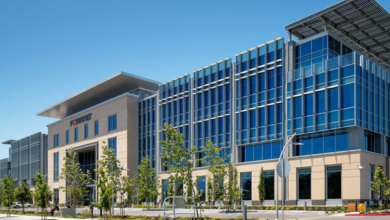Scottish local government: Connecting with citizens

Martyn Wallace, Chief Digital Officer for Scottish Local Government outlines the use of the ACE (assets, citizens, and employees) formula in enabling digital transformation at local government level.
Wallace believes that ensuring data is securely stored, and overcoming poor broadband connectivity will circumvent the main obstacles preventing digital transformation taking place in a more timely manner. Reaching the rural population, Wallace believes, is a difficulty faced by Scottish local government and is analogous to challenges faced in Northern Ireland.
“Cloud is not necessarily seen as an enabler but a disabler because we need a faster connection speed. There are in-fill programmes in Scotland with our 100 for Broadband and Superfast schemes for premises, but that is still to be fully rolled out across the whole of Scotland, which means that we have to find different ways of competing and different ways of delivering services.”
Assets
Outlining the importance of optimising an organisation’s assets, Wallace explains: “It is necessary to look at the service components of buying, paying, filling a form in, fixed penalty notices, as well as breaking down the business components in terms of what your business is serving, what kind of services you have to do, what you have to reinvent, and what gaps need to be filled with digital services.”
He further highlights the importance of data processing, whilst additionally calling for a clear set of priorities to establish the technology which can be best utilised for the task in question.
“You have to look at the data: where is the data from, where is it held, and the technology stack. We look at technology and we get wowed by these presentations from all of the big companies. Whilst I love AI, I need to know fundamentally how that is going to affect my business.”
Wallace also emphasises the importance of ensuring that digitalisation does not mean a curbing of available services for citizens who cannot be reached online. Instead, he outlines that online users’ services can be made more efficient, which has the knock-on effect of freeing up the organisation’s workers to serve those users who are not online.
“Not everybody has access to the technology to access public services online. We have to look at the physical/online assets conundrum, which is getting as many of our services online as possible so that we can reinvest back into the offline services which serve the people who need them the most in our vulnerable society.”
“You have to build your transformation around the user. It is human by default technology and data by design, not the other way around.”
Citizens
Wallace outlines his strong belief that all digital enablement and transformation must be underpinned with the recognition that devices and services must be equipped to serve regardless of their access to digital services, and that there must be an element of digital enablement. However, he believes this is a lesser priority than using technology to streamline services wherever possible.
“Fundamentally, service design is key in all of this; designing the right thing and designing it the right way is important. It is about discussing, finding, and understanding the customers’ needs, looking at what assets you have got, the different components, and build what they want. You then need to do is deconstruct your existing devices and build them again, tailored to the individual user.”
Asserting that there is “no correct answer” as how to define service design, Wallace adds: “Service design is something which is user central, it is user design creative, and a little bit uncomfortable like sharing your mobile phone with somebody else.
“You have to build your transformation around the user. It is human-by-default technology and data-by-design, not the other way around.”
Employees
Digital transformation was a key enabler of the working culture shift which took place during the Covid-19 lockdowns, according to Wallace.
“With the new development of hybrid work, we are still seeing businesses looking through the lens of going ‘back to normal’. People are going back to an office to sit for eight hours on Microsoft Teams meetings. I cannot think of anything worse. We have to look at this as a culture change and enable and support that.
“We need staff to have easy access to apps and models for remote learning.”
Wallace concludes by addressing widely-held concerns about the potential for jobs to be eliminated with the rise of AI and continued automation. “Fundamentally this technology is here and it can open so many opportunities for a better work-life balance, but also improve the quality of our services for so many of our citizens as well.”





